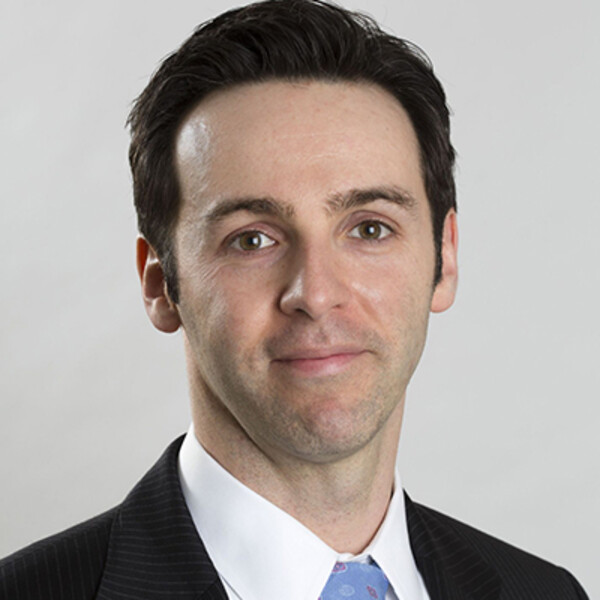Main Second Level Navigation
Slava Epelman
MD, PhD, FRCPC

Dr Slava Epelman MD, PhD is a Clinician-Scientist in the Department of Medicine, Division of Cardiology at the University Toronto, Peter Munk Cardiac Centre, and a Scientist at the Toronto General Research Institute, University Health Network.
Dr Epelman obtained his MD / PhD (in Immunology) from the Univeristy of Calgary and then did his medical residency / clinical fellowships at the Cleveland Clinic, Baylor College of Medicine and Washington University.
He is a staff cardiologist in the Peter Munk Cardiac Centre at the Toronto General Hospital.
His scientific interests are focused on the role macrophages in cardiac tissue injury and regeneration.
Research Synopsis
The leading cause of worldwide mortality is cardiovascular disease.
After an initiating event, the immune system regulates both cardiac tissue injury and repair. Despite significant investment, we have an incomplete understanding of the immune cells and pathways involved.
More primitive organisms possess a striking regenerative potential after injury. The zebrafish and newt hearts can fully regrow after injury and the salamander can fully regrow limbs after amputation; adult mammals possess neither of these abilities.
However, neonatal mammals appear to possess significant regenerative capacity. For example, the neonatal heart, whether through apical resection of the left ventricle or myocardial infarction, can fully regenerate ; this regenerative potential is lost after the first weeks of life.
One important similarity between more primitive organisms and very young mammals is a more limited (primitive) immune system.
Phagocytes are an evolutionary conserved immune lineage that evolved more than 600 million years ago. We have shown that the macrophage is a specialized mononuclear phagocyte that resides in all tissues from the earliest stages of development, and is critical for tissue repair.
Alternatively, macrophages can also mediate significant cardiac tissue injury.
This apparent paradox has been difficult to resolve until our recent work.
One of the major impediments limiting progress has been the prevailing assumption that bone marrow-derived circulating monocytes are the source of all tissue macrophages.
Utilizing genetic fate mapping and parabiotic studies, we have demonstrated that cardiac macrophages have two distinct ontological origins.
The majority of cardiac macrophages are derived from embryonic progenitors and renew in situ without monocyte input, while the remainder originate from monocytes produced by bone marrow hematopoietic stem cells.
Primitive embryonic-derived macrophages promote cardiac tissue repair while bone marrow-derived macrophages promote tissue injury. These potentially dichotomous functions are a major focus of the lab.
Major areas of ongoing investigation
Animal models of cardiac tissue injury and repair
We are focused on understanding the role that myeloid cells (monocytes, macrophages and dendritic cells) play within the myocardium during steady state and following tissue injury.
These myeloid subsets are a heterogeneous population of cells with distinct origins and functions, and participate in the initial inflammatory and subsequent wound healing responses after myocardial tissue injury.
Using genetic and surgical mouse models, we are trying to understanding how individual myeloid subsets are activated, what factors regulate their entry into the myocardium and subsequently, their persistence and fate in the myocardium.
In addition, we are identifying the contribution of each myeloid subset to the process of cardiac regeneration.
We use models of hemodynamic stress (hypertension), ischemic stress (myocardial infarction) and also infective injury (viral myocarditis) in order to study the role of macrophages in tissue damage and repair.
Translational studies in patients with cardiovascular disease
We also have several integrated translational projects that focus on the corresponding human myeloid subsets, how they are activated and how their activation state relates to myocardial function and myocardial recovery in patients following myocardial tissue injury (myocardial infarction).
By focusing on how myeloid cells are activated in humans, we hope to identify pathological pathways that identify patients who will be at higher risk for developing severe cardiac dysfunction and identify new therapeutic targets.
Recent Publications
Epelman S, Lui PP, Mann DL. 2015. The Role of innate and adaptive immune mechanisms in cardiac injury and repair. Nat. Rev. Immunol. 15(2):117-29.
Lavine KJ, Epelman S, Uchida K, Weber KJ, Nichols CG, Schilling JD, Ornitz DM, Randolph GJ and Mann DL. 2014. Distinct Macrophage Lineages Contribute to Disparate Patterns of Cardiac Recovery and Remodeling in the Neonatal and Adult Heart. Proc. Natl. Acad. Sci. 111(45):16039-34.
Epelman S, Lavine KJ, Randolph GJ. 2014. Origins and function of Tissue Macrophages. Immunity. 41(1): 21-35.
Emanuel R, Sergin I, Bhattacharya S, Turner J, Epelman S, Settembre C, Diwan A, Ballabio A and Razani B. 2014. Induction of Lysosomal Biogenesis in Atherosclerotic Macrophages Can Rescue Lipid-Induced Lysosomal Dysfunction and Downstream Sequelae. Arterioscler. Thromb. Vasc. Biol. 34(9): 1942-52.
Epelman S, Lavine KJ, Beaudin AE, Sojka DK, Carrero JA, Calderon B, Brija T, Gautier EL, Ivanov S, Satpathy AT, Schilling JD, Schwendener R, Sergin I, Razani B, Forsberg EC, Yokoyama W, Unanue ER, Colonna M, Randolph GJ and Mann DL*. 2014. Embryonic and adult-derived resident cardiac macrophages are maintained through distinct mechanisms at steady state and during inflammation. Immunity. 40. 91-104
Epelman S and Mann DL. 2012. Communication in the Heart: The Role of Innate Immunity In Coordinating Cellular Responses to Ischemic Injury. J. Card. Transl. Res. 5(6): 827-836
Epelman S and Tang WHW. 2012. H2S – the newest gaseous messenger on the block. J. Card. Fail. 18(8): 597-599.
Epelman S, Troughton RW, Shrestha K, Francis GS, Sen S, Klein AL and Tang WHW. 2009. Soluble Angiotensin Converting Enzyme 2 in Human Heart Failure: Relation with Myocardial Function and Clinical Outcomes. J. of Cardiac Failure. Sep;15(7):565-71.
Epelman S, Tang WHW, Chen SY, Lente FV, Francis GS and Sen S. 2008. Detection of Soluble Angiotensin Converting Enzyme 2 in Heart Failure: Insights into the Endogenous Counter-Regulatory Pathway of the Renin-Angiotensin-Aldosterone System. J. Am. Coll. Card. 52(9): 750-4. PMCID: PMC2856943.
Appointments
Staff cardiologist in the Peter Munk Cardiac Centre, Toronto General Hospital
